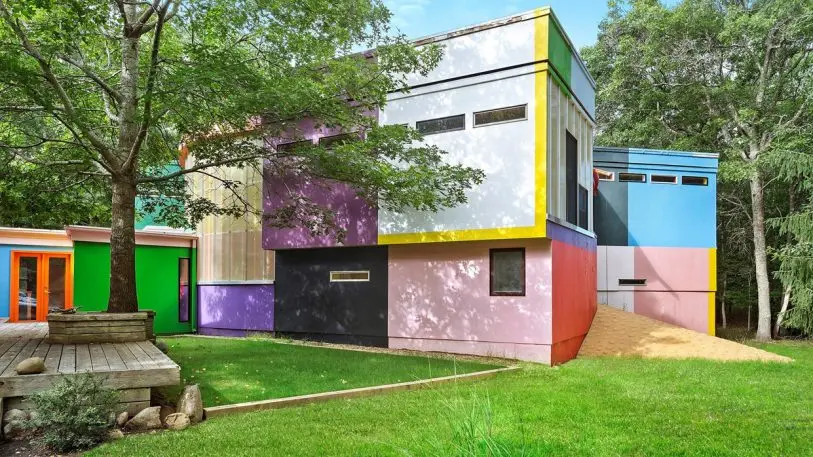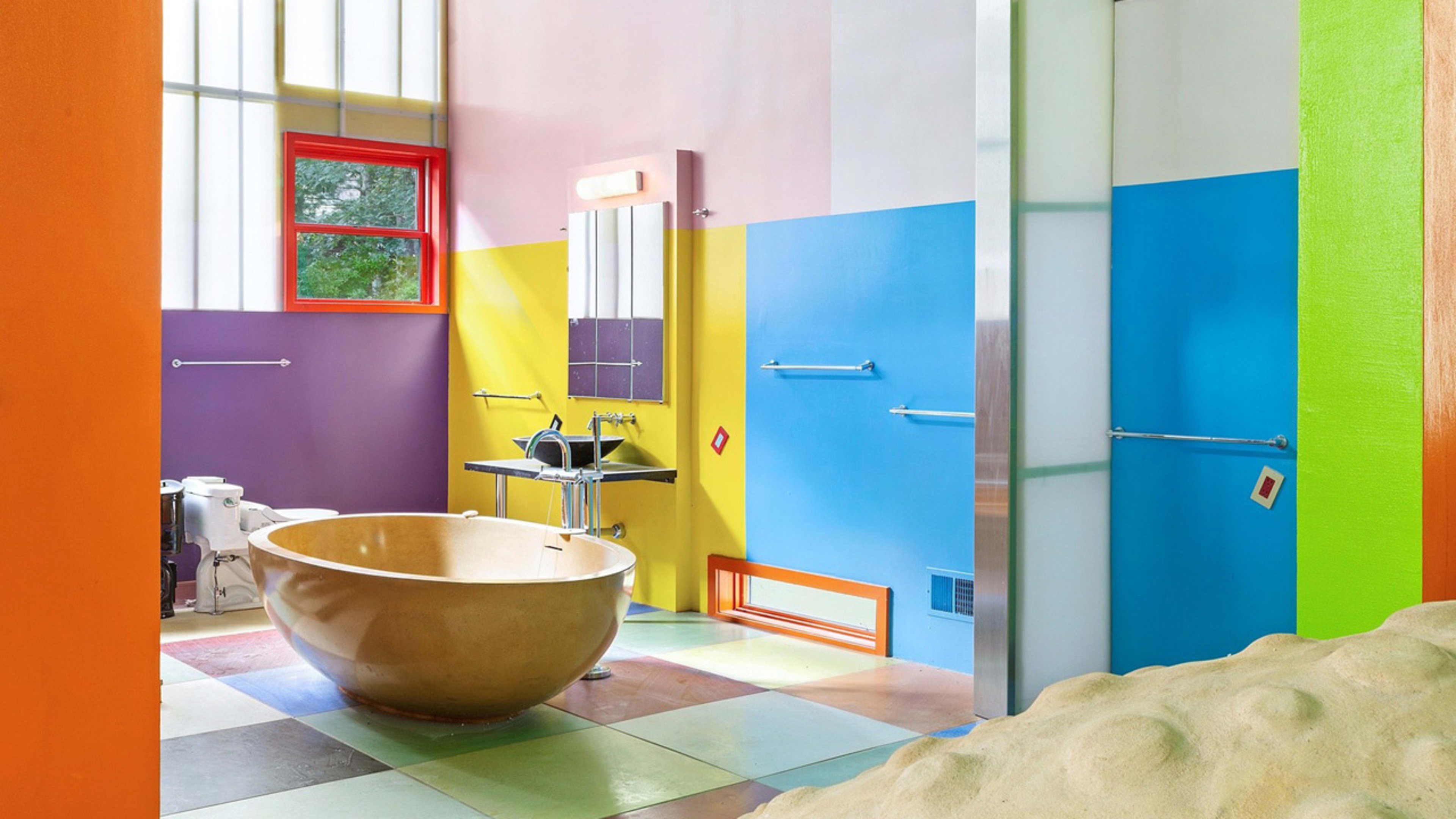Can architecture be conducive to eternal life? The Egyptians certainly believed so–but only in the other world. Avant-garde artists Madeline Gins and Arakawa claimed that their Bioscleave House could stop or reverse the aging process. That four-bedroom house, in East Hampton, New York, is now for sale.
Gins and Arakawa coined the term “bioscleave” in Arakawa and Gins’s 2002 book Architectural Body. They defined it as the dynamic space that surrounds us in buildings.
The house has undulating concrete floors, walls painted in 52 different colors, and a kitchen with no straight lines whatsoever. Everything has crannies and nooks and corners and curves that require you to be alert at all times lest you hit your hips or hands. The idea is to throw people off balance and force them to constantly be aware of their surroundings. This challenge, the artists claimed, stimulates the immune system, leading to an anti-aging effect. “They ought to build hospitals like this,” they told the New York Times in 2008. (To which the reporter countered, they most certainly should not.)

Arakawa and Gins–who met and married in the late ’60s–took the idea of architectural healing to the limit. They developed something called Reversible Destiny, a theory that, as the Times described it, was conceived “to outlaw aging and its consequences.” The house was a laboratory for testing these radical ideas. And you can see just how outlandish it was:


Recognize your brand’s excellence by applying to this year’s Brands That Matter Awards before the early-rate deadline, May 3.
